There are about 70 different Sansevieria species. Some of them are dark green with white stripes (both vertical and horizontal) and some have yellow edges or a red tint.
Others are even a lighter green and others are quite dark. There is quite a variety when it comes to these unique plants!
These are beautiful indoor succulents with natural air filtering qualities, converting CO2 to oxygen at night and also help to improve a room’s air flow! They can also be grown outdoors and add such beauty to landscapes!
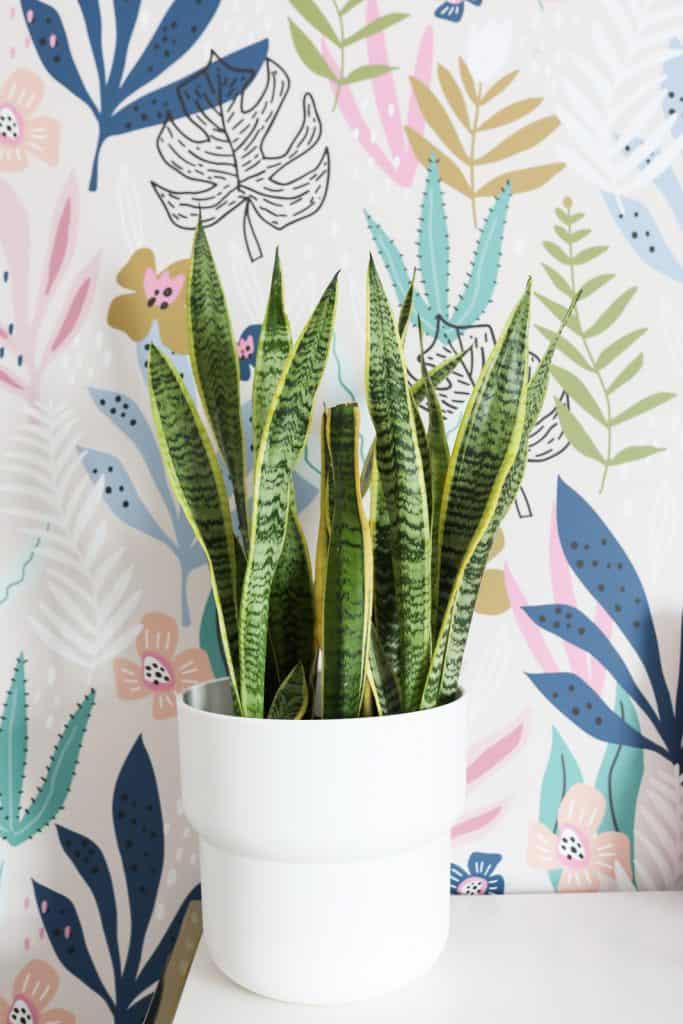
Their particular form and structure are very attractive to have in a grouping of houseplants. They also add dimension and shape to a room setting. They are considered succulents since their leaves store water to reduce the need for hydration.
With proper care, they can live for up to 15 years! Some of the varieties grow several feet tall and others not quite so tall. They add a lot of interest to any gardening display whether inside or out, so let’s take a look at some of the different varieties here!
Table of Contents
21 Types of Sansevieria Plants
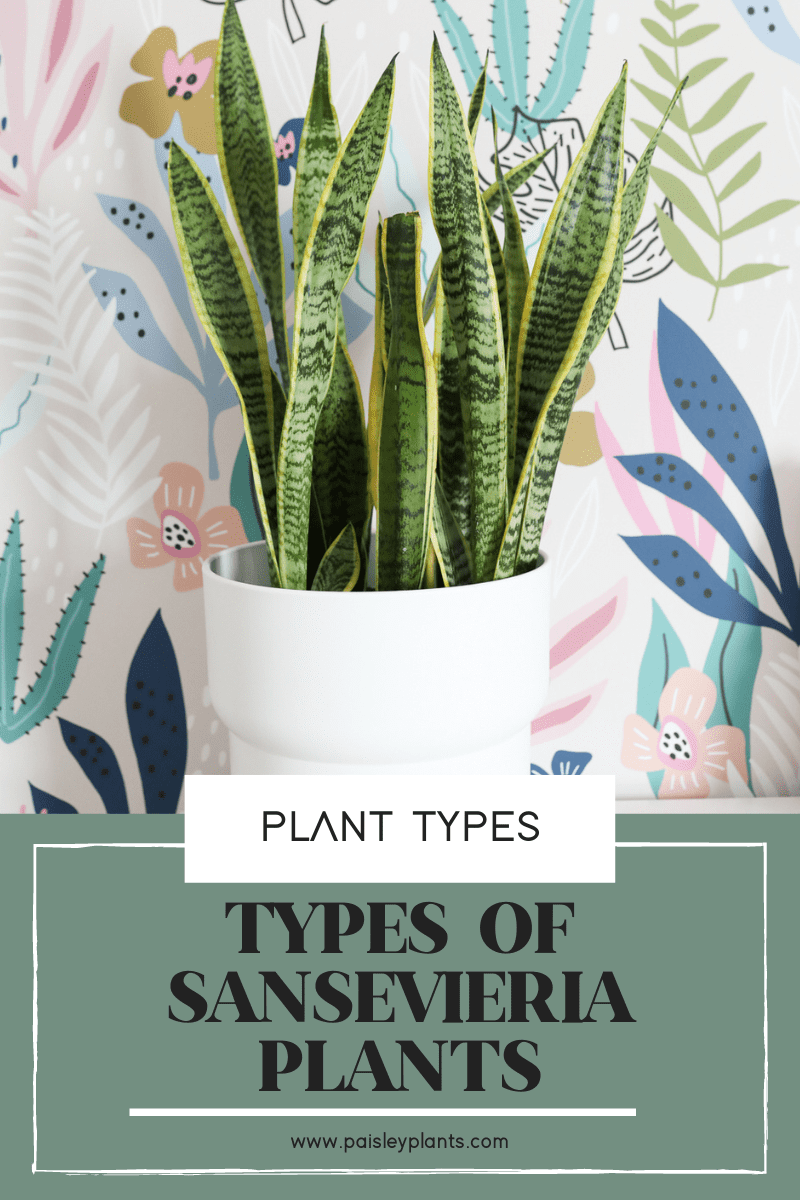
This post includes affiliate links.
There’s many different types of snake plants. Here’s 21 different snake plant varieties!
1. Sansevieria Trifasciata
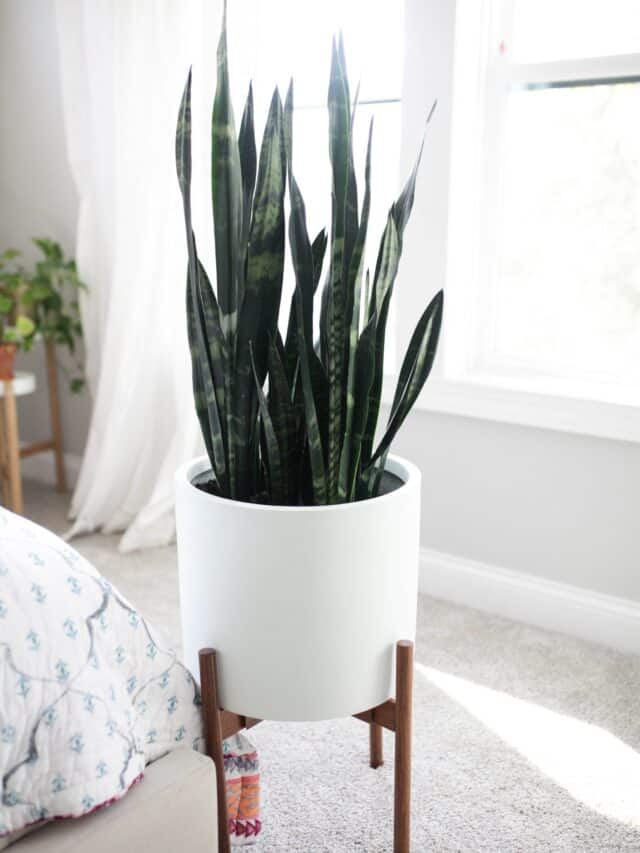
This is the most commonly known type of snake plant which goes by the common names snake plant or mother-in-law’s tongue. It originates from tropical West Africa.
The plant has dark green leaves with lighter green or even whitish gray variegation on the leaves. Its leaves are tall and thin and smooth and waxy and the plants can get very large.
This is one of the most common types of indoor plants because it’s so hard and easy to grow.
2. Sansevieria Trifasciata “Futura Robusta”
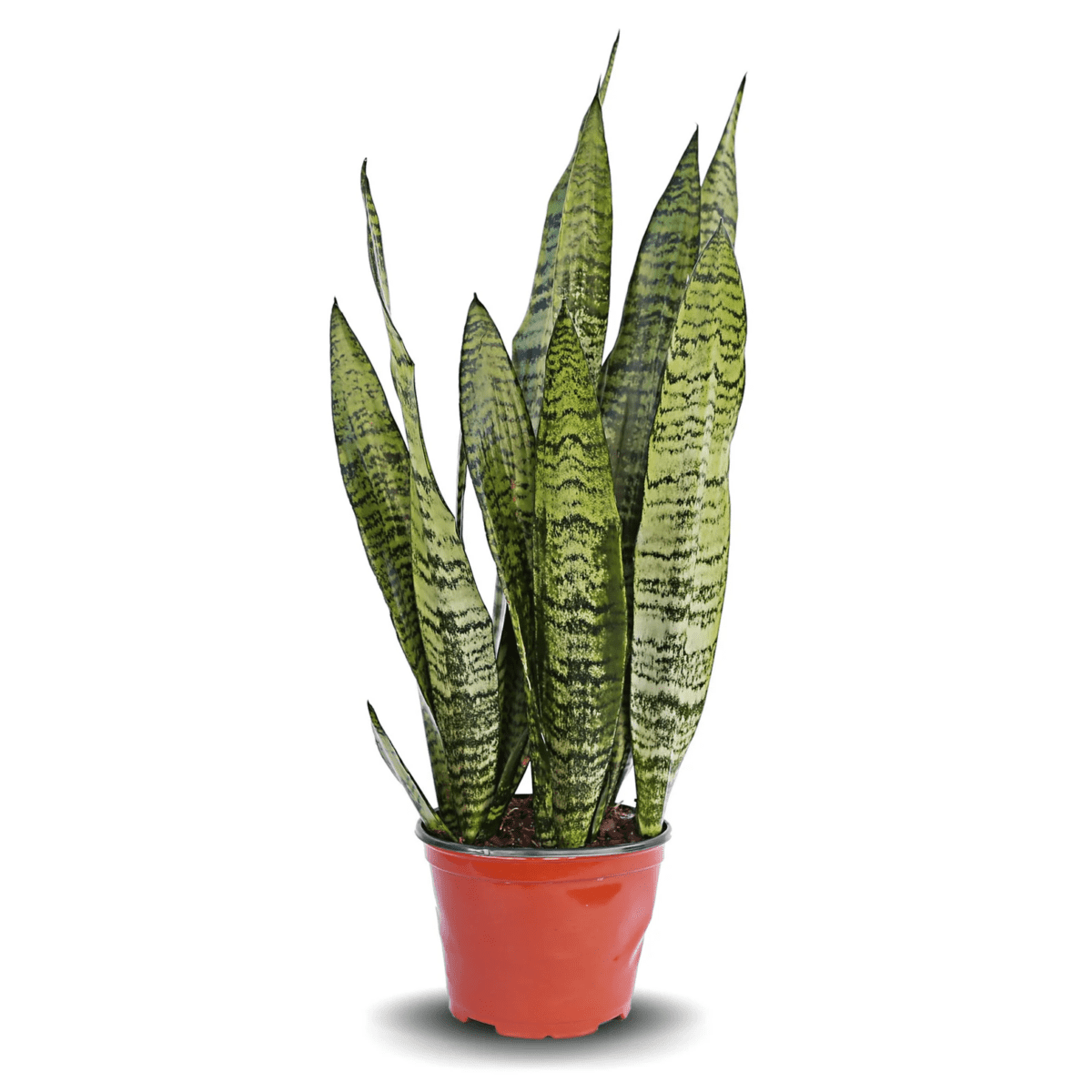
Image via Rooted Friends
This Sansevieria has sword shaped leaves, but are distinctly shorter than some types of Sansevieria leaves. It thrives indoors, but requires less watering than other Sansevierias.
It has striped leaves with a gray-green color and can grow up to 2 ft. in height.
3. Sansevieria Trifasciata “Golden Hahnii”
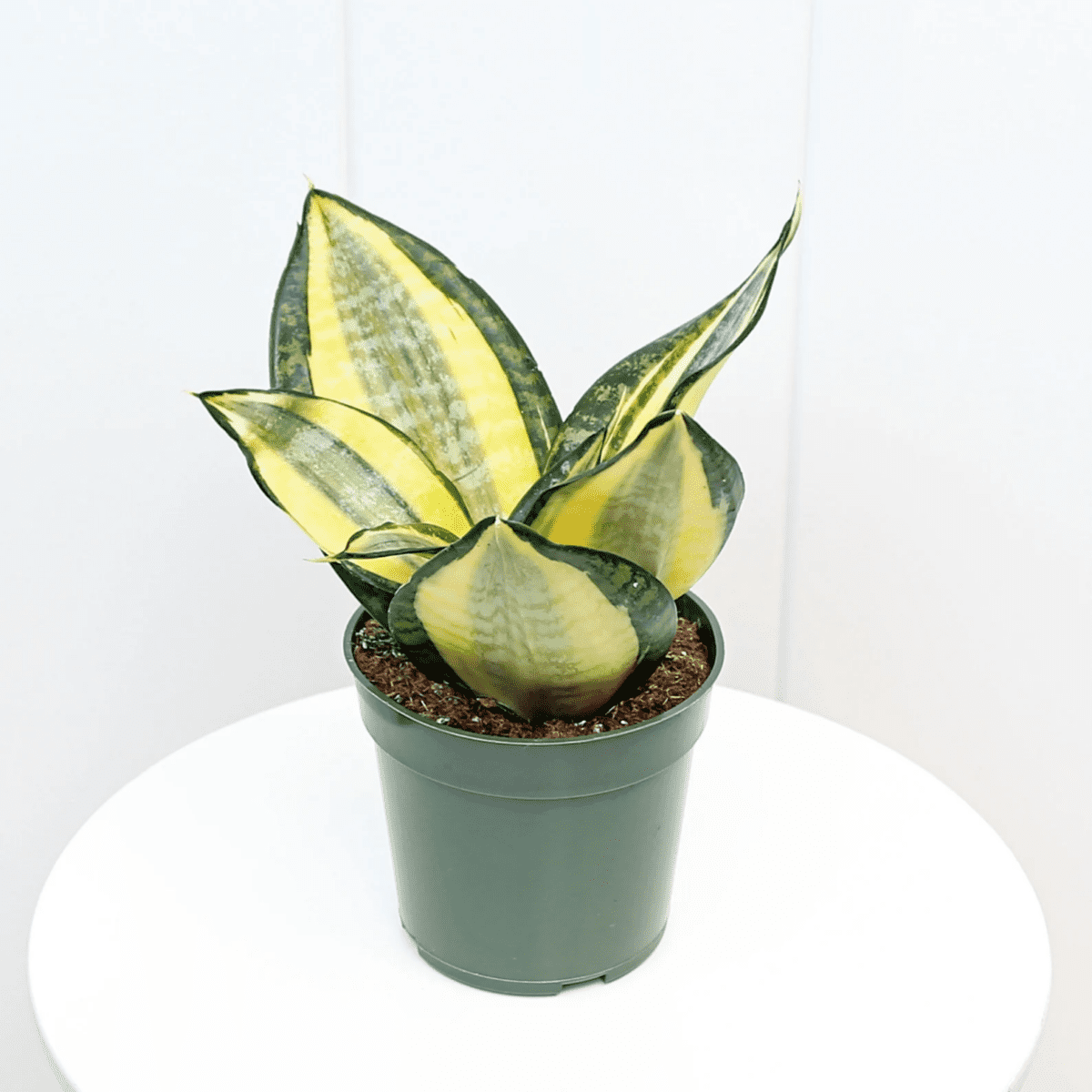
Image via Rooted Friends
This Sansevieria is also known as a Bird’s Nest Sansevieria. Its leaves are broader than most snake plant types. The leaves are tapered at the tip with creamy yellow and green stripes running horizontally across the leaves.
At maturity, the leaves form a clump and grow from a single rosette. These plants can grow up to 2 ft. tall.
4. Sansevieria Trifasciata “Twisted Sister”
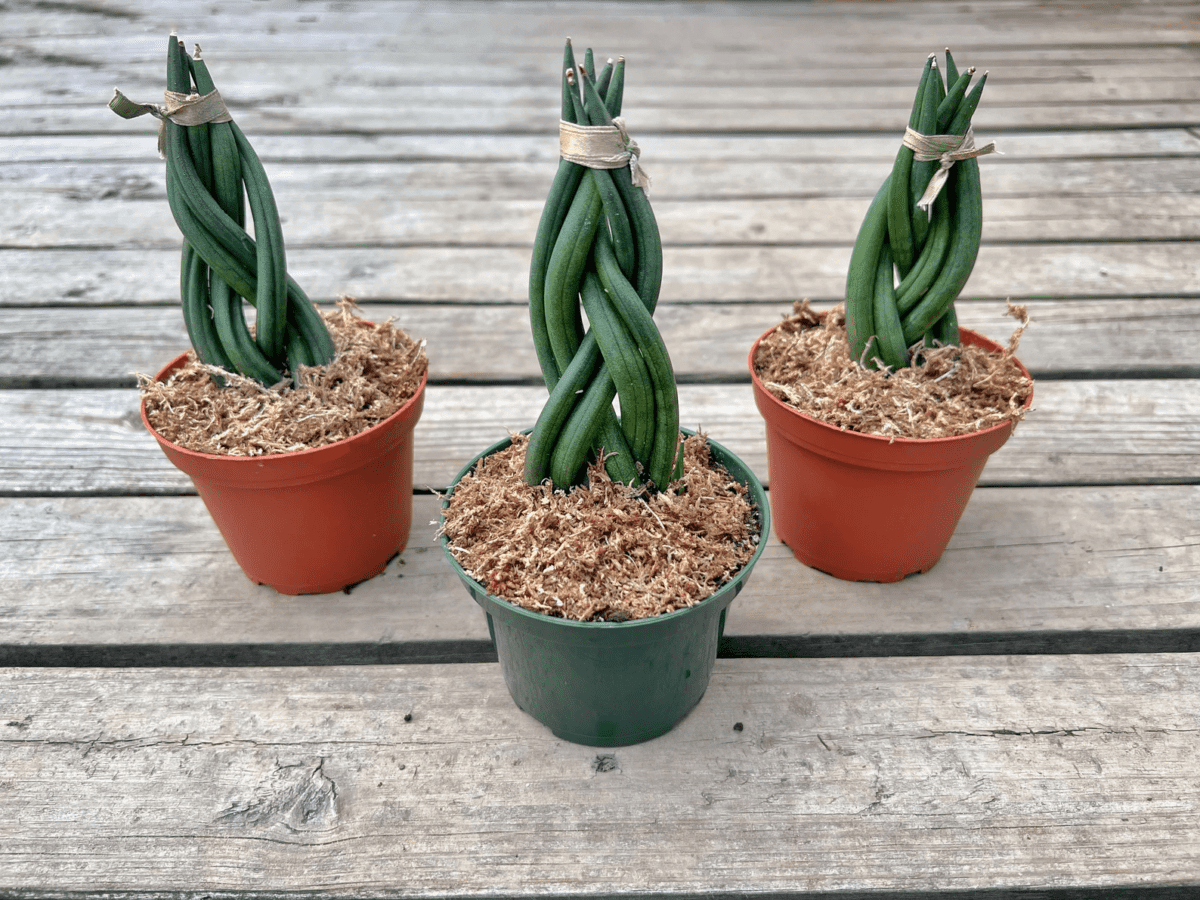
Image via the Odd Frond
A special feature of this type of Sansevieria is that its leaves are twisted, thus its name Twisted Sister. The leaves form a bird’s nest shape because of its distorted shape.
It has leathery, variegated green and yellow leaves with bright yellow margins. This is also a type of dwarf snake plant of the S. Trifasciata and only growing to about one foot in height.
5. Sansevieria Whitney
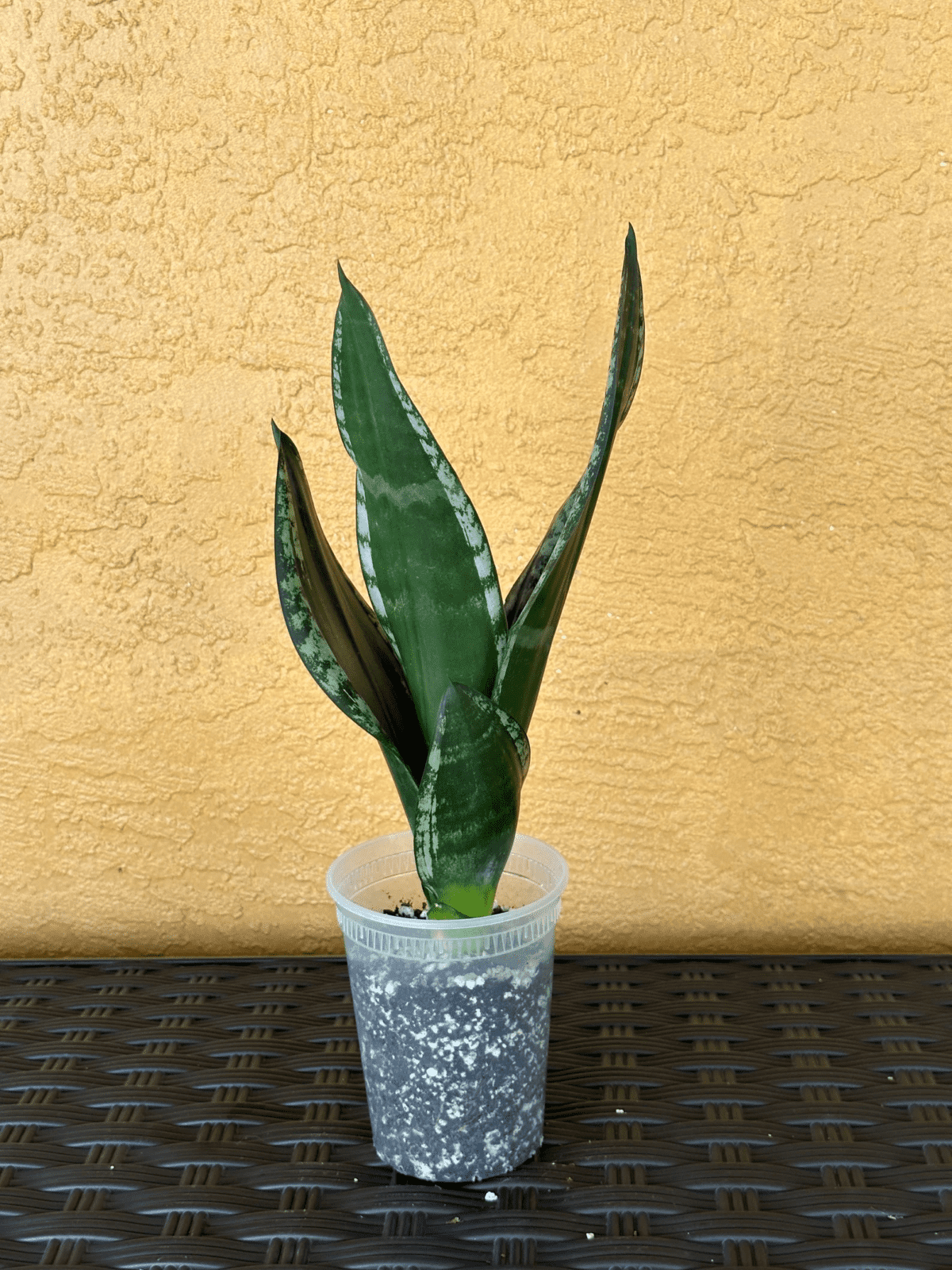
Image via Plant Hungers FL
The Sansevieria Whitney is also a dwarf variety of Sansevieria. It is notable for its dark green leaves with silver-green edges and undersides.
There are white and yellow stripes all over its leaves. It will grow from a single rosette composed of 4-6 leaves with upright and slightly curved leaves.
6. Sansevieria Trifasciata Moonshine
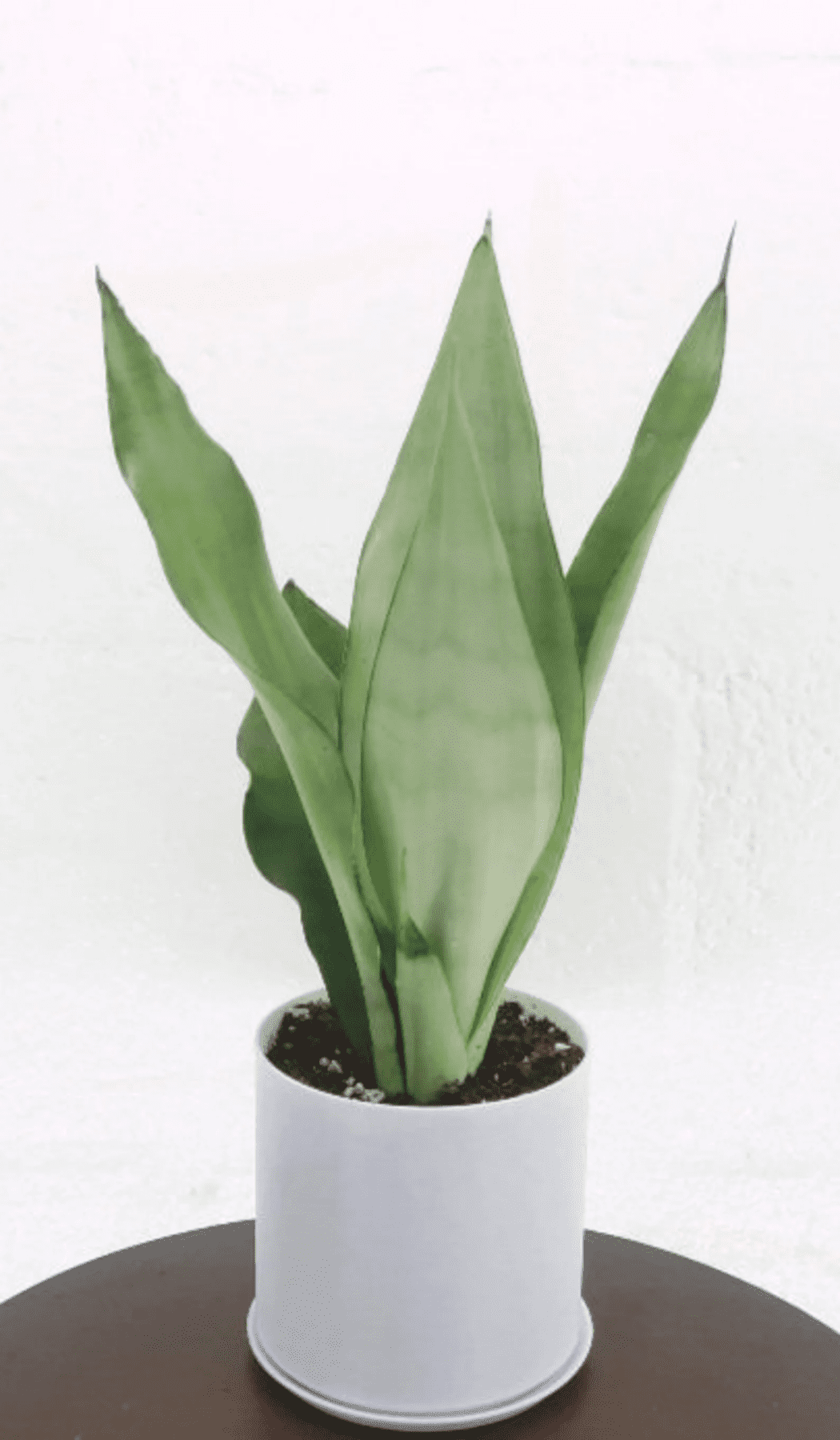
Image via River Leaf Foliage
This Sansevieria has distinctly light mint green leaves. The stronger the lighting, the lighter the leaves become. This plant is native to Congo and Nigeria regions in Africa.
You can grow it either indoors or outdoors. This is one of the rarer Sansevieria trifasciata varieties. It also absorbs toxins and releases oxygen into the air!
7. Sansevieria Trifasciata Jaboa
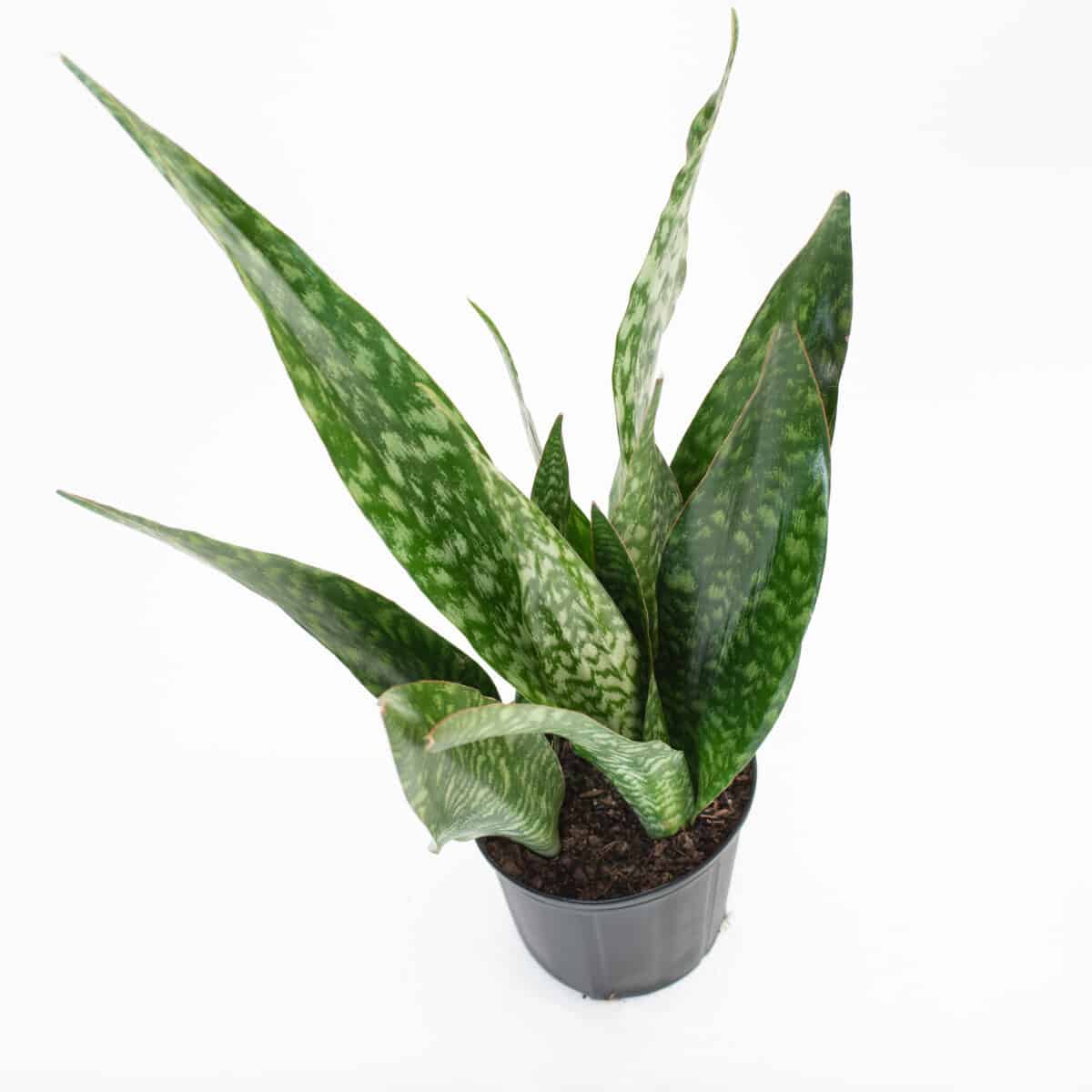
Image via Walmart
The Sansevieria Jaboa grows big and beautiful with tall, wide, and thick leaves. The leaves have a bit of orangey-red tint on the edges. They are highly variegated with grayish-white and medium green color.
This plant prefers warm, bright locations and will tolerate some direct sunlight. It can grow anywhere between 6 inches to 8 feet tall, depending on the environment!
8. Sansevieria Trifasciata Hahnii Black Jade
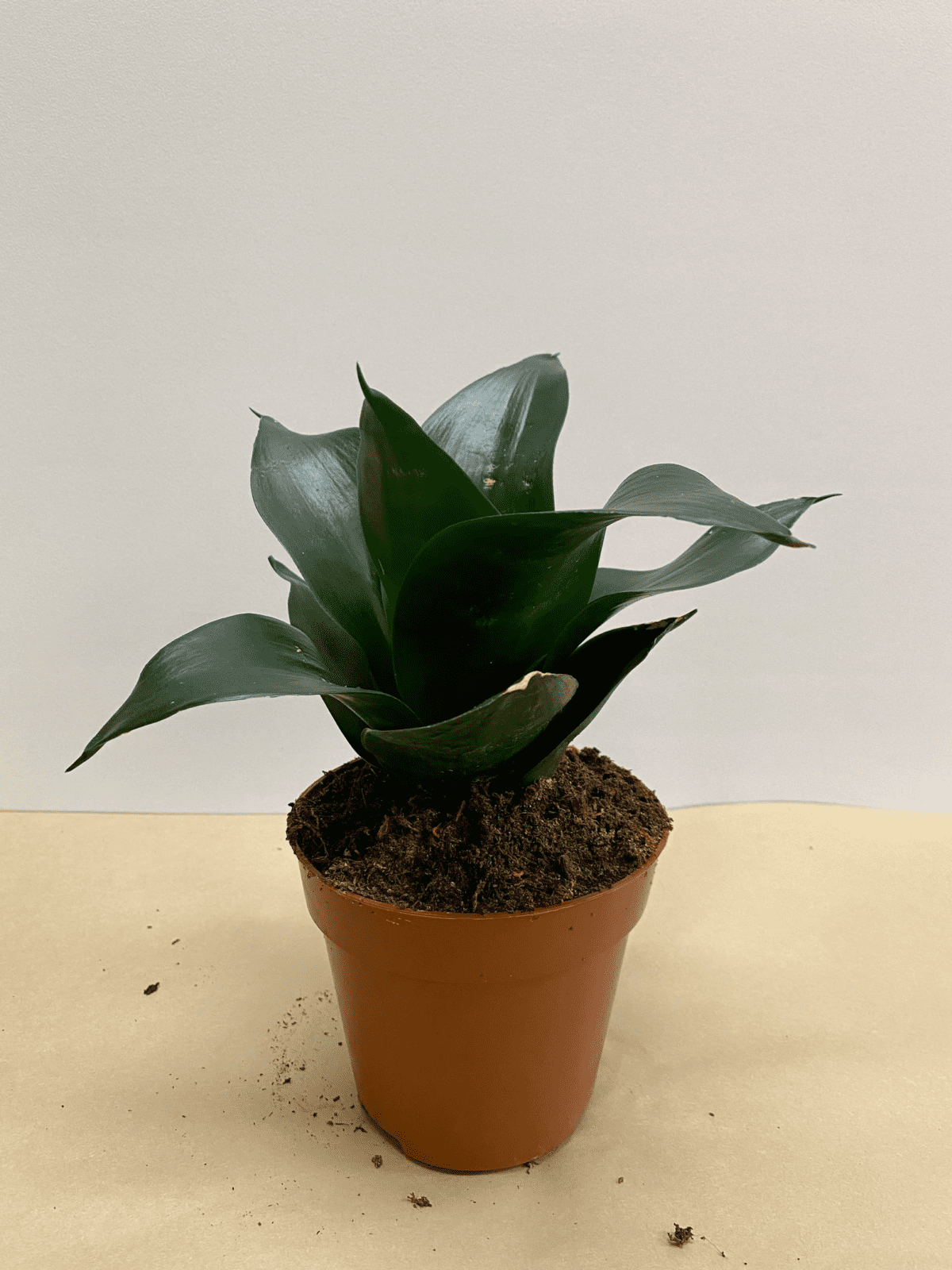
Image via Lively Plants and Co
This snake plant variety has deep coloring as the leaves mature. It is also sometimes labeled as “black” since leaves can get very dark in color. The leaves do not have variegation like other Sansevieria.
They may have some fading of the leaves as the plant grows. It thrives in medium to bright indirect light, but should be kept from direct sunlight.
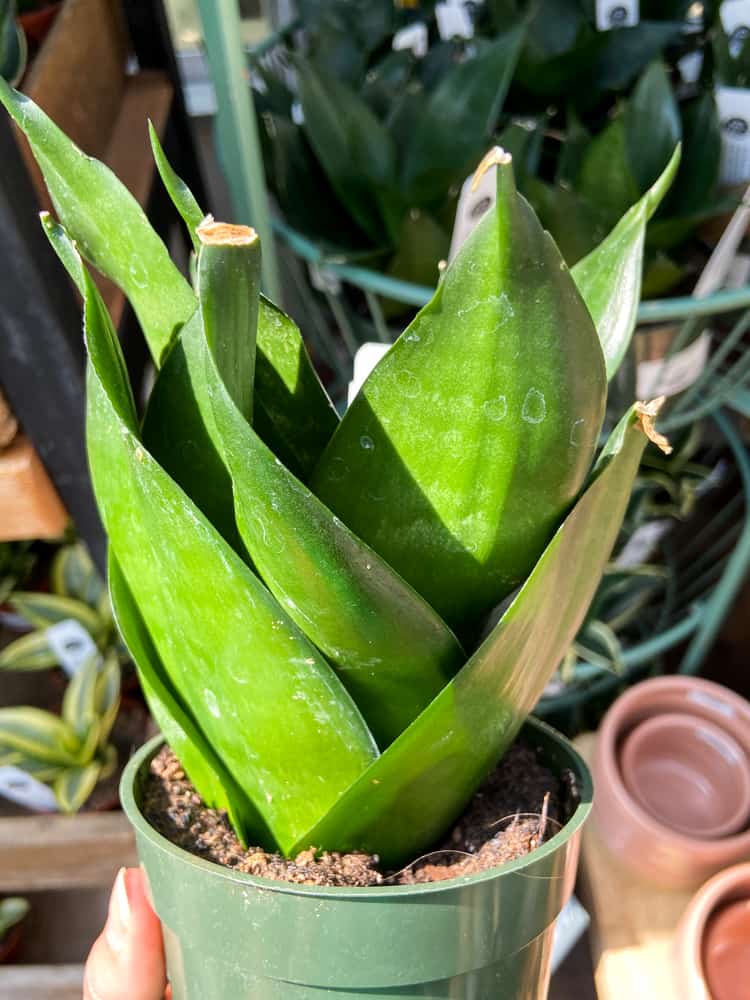
9. Sansevieria Trifasciata Hahnii Night Owl
This beautiful Sansevieria is often confused with the Trifasciata Moonshine. It is much lighter in color, but has a border unlike the Moonshine. The border ranges from cream to yellow to green.
The green isn’t as true of a mint green as the moonshine variety leaves. The Night Owl is more compact and shorter than other varieties of Sansevieria. It is also one of the more rare types of Sansevieria Trifasciata.
10. Sansevieria Trifasciata “Bentel’s Sansation”
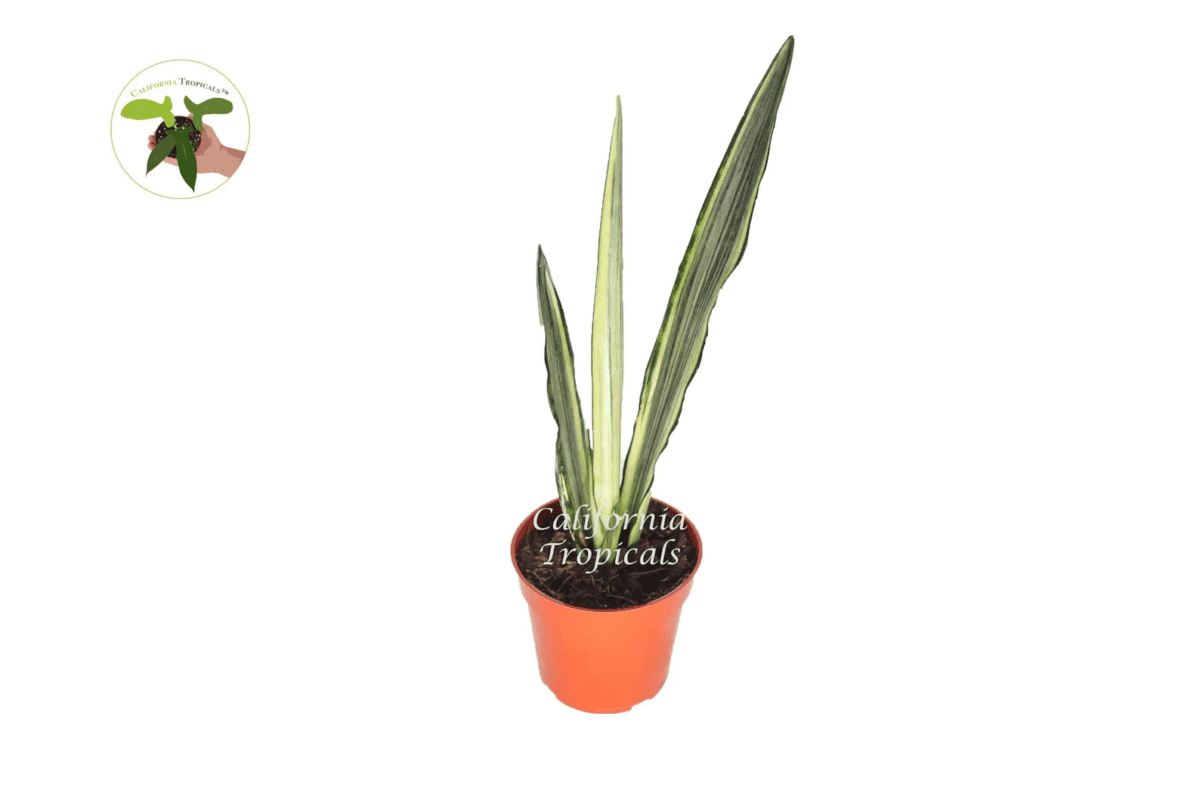
Image via California Tropicals
This plant is considered to be rare and unusual amongst the Sansevieria Trifasciata family. It has distinctive white vertical striping in the narrow leaves.
It is sometimes called White Sansevieria. The 1-2 inch leaves are narrower than most other Sansevieria varieties’ leaves. It will usually grow about 36 inches tall in a container.
11. Sansevieria Raffillii
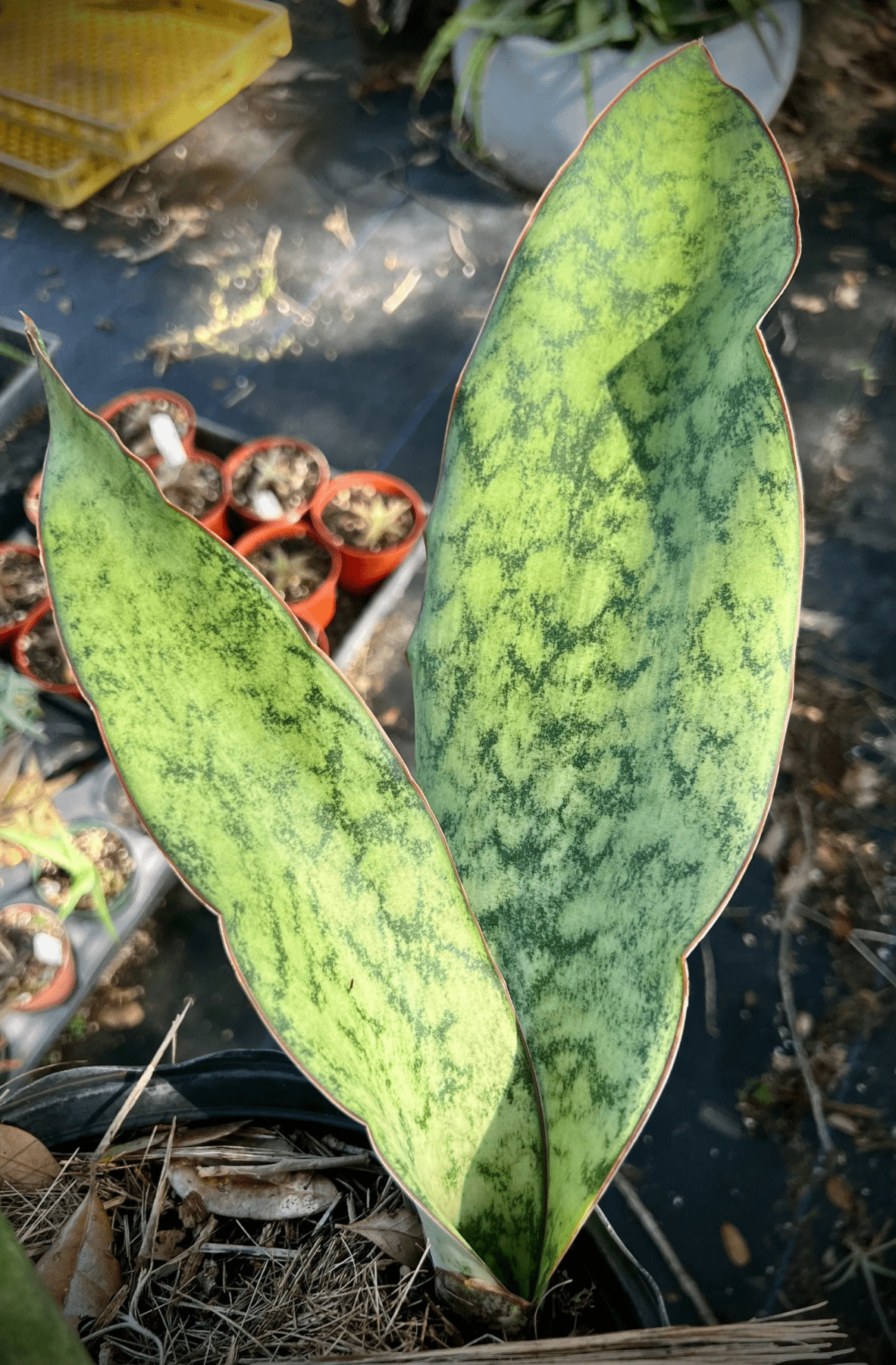
Image via Paradise Found Nursery
This plant is native to Kenya and Somalia regions of Africa. It will grow in shady locations, but prefers a sunny to bright location. It also prefers temperatures between 68 and 77 degrees F.
The leaves have irregular transverse bands on the green leaf base. Water it sparingly. Wet feet can cause root rot!
12. Sansevieria Masoniana “Whale Fin”
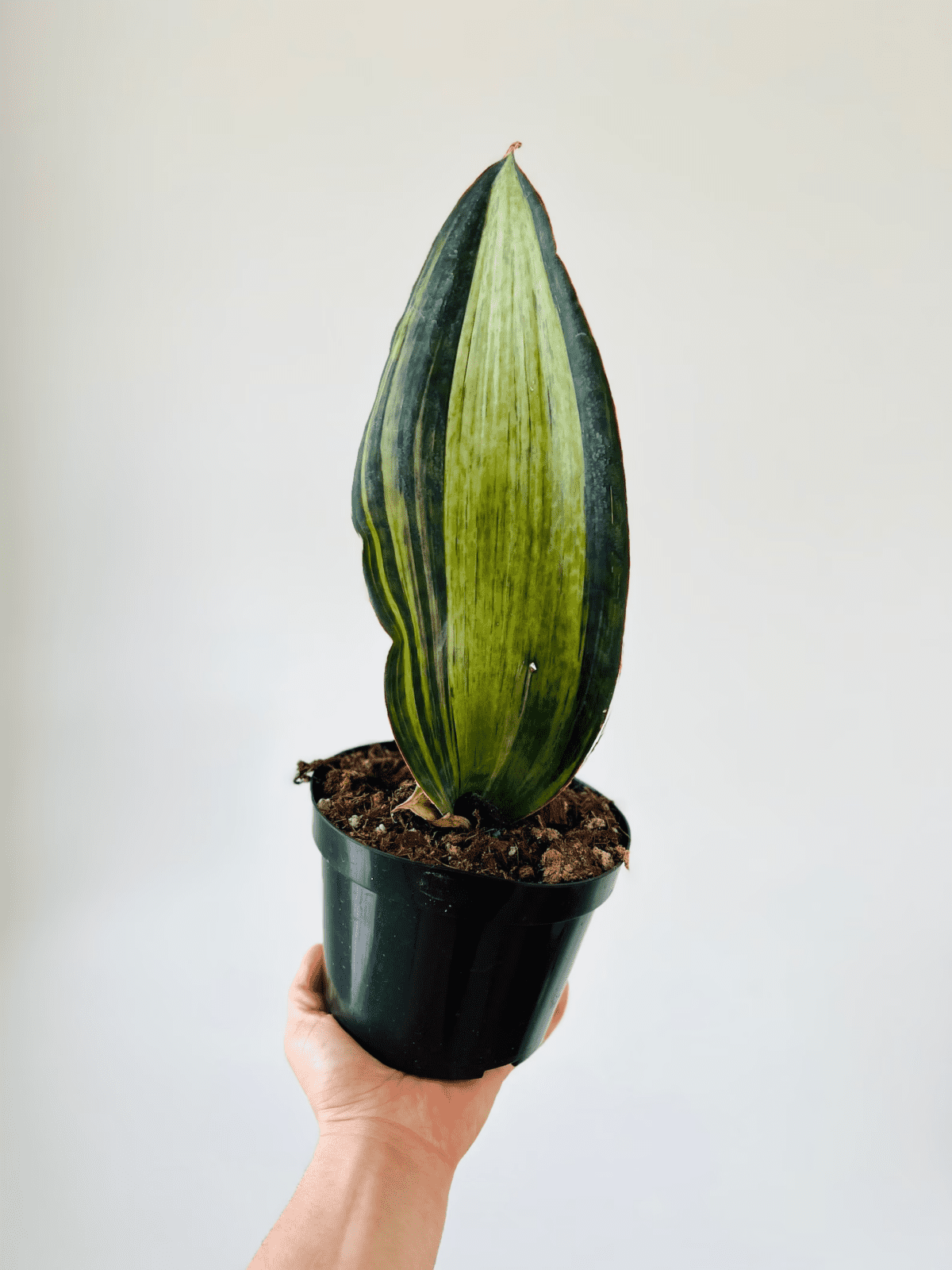
Image via Brumley and Bloom
The Whale Fin has one distinct wide fin type leaf, thus the name. This plant can live in shade or in bright light. It does not require much food or fertilizer. This plant will tolerate being root bound, so does not need frequent repotting.
The ideal temperature range is from 65-80 degrees F. Average household humidity is just fine for these plants. It is toxic to both animals and children, so keep it away from both.
Fine more whale fin care tips here!
13. Sansevieria Ehrenbergii “Samurai”
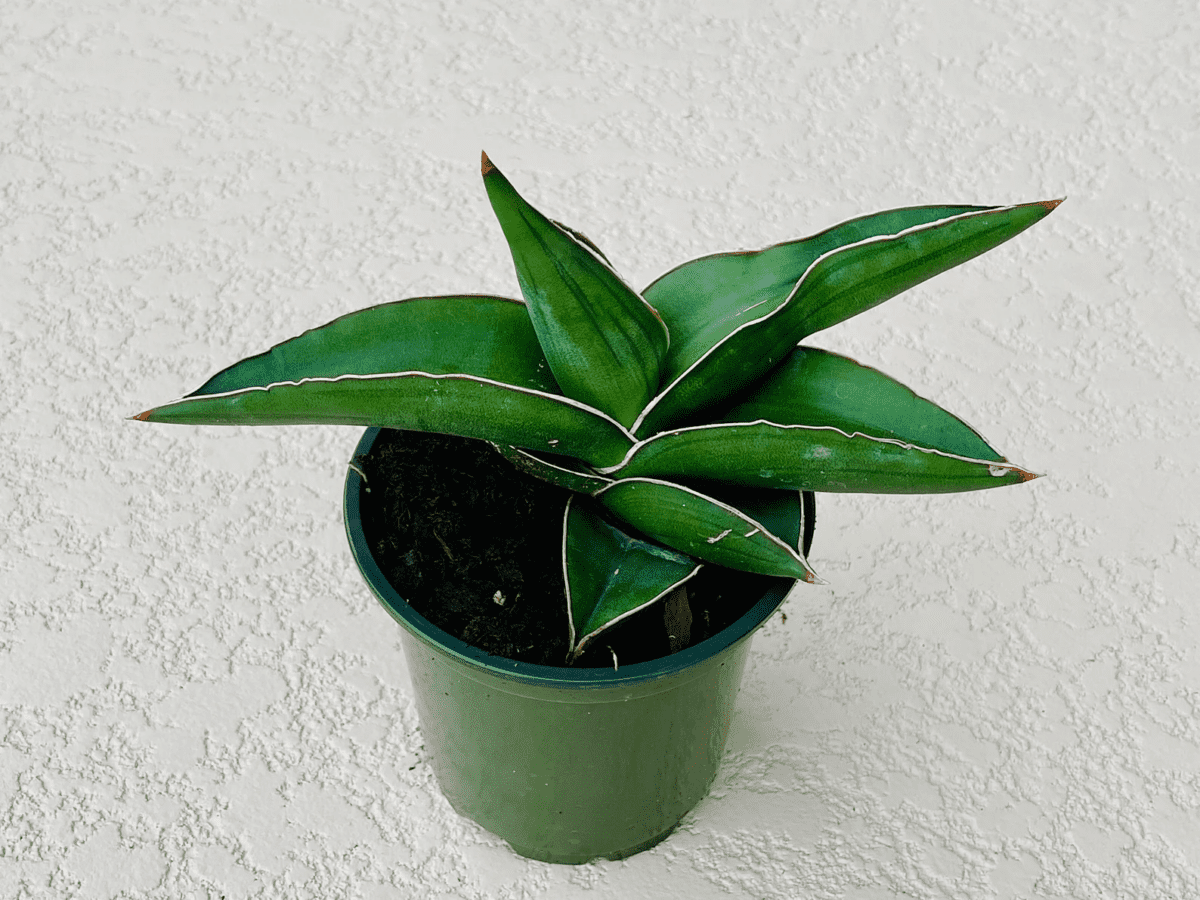
Image via Bella Succulents
This one looks a lot like a cylindrical snake plant. Its leaves create a fan shape as they grow. It has thick, dark green pointed leaves that grow in opposite paired rows in a unique zigzag pattern with red tinted edges.
This plant is a very slow grower. It grows best in full or partial sun but can also be grown in indirect sunlight or bright shade. It is one of the air purifying Sansevierias and will detoxify the air in your home!
14. Sansevieria Cylindrica
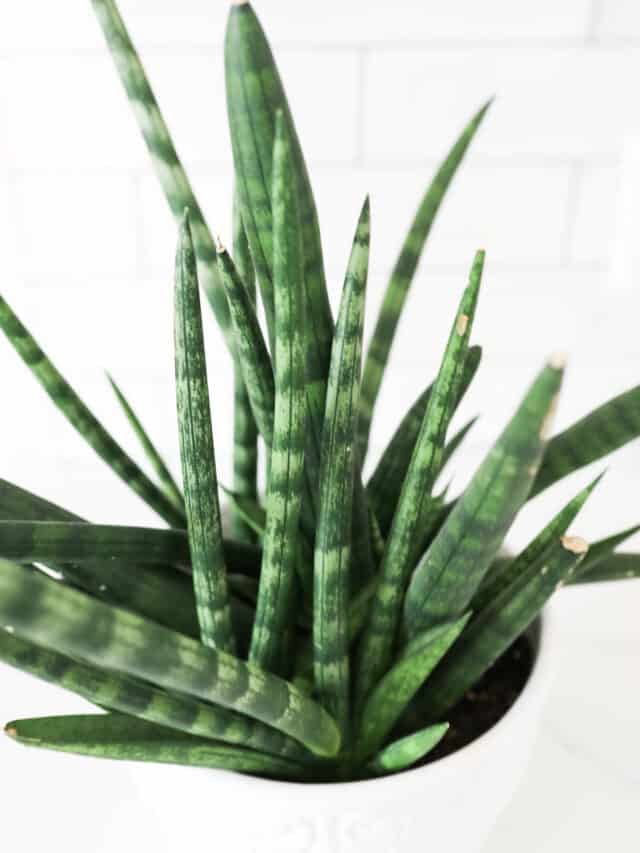
This plant has round, cylindrical leaves. It is very low maintenance and thrives on neglect! It can survive indoors in low light. In fact, too much light can cause leaves to turn yellow!
It needs very little water, so be sure to not overwater it. It is also an air purifying plant by removing carbon dioxide from the air and produces oxygen during the night.
Find a full care guide for your Sansevieria Cylindrica here!
15. Sansevieria Fernwood “Mikado”
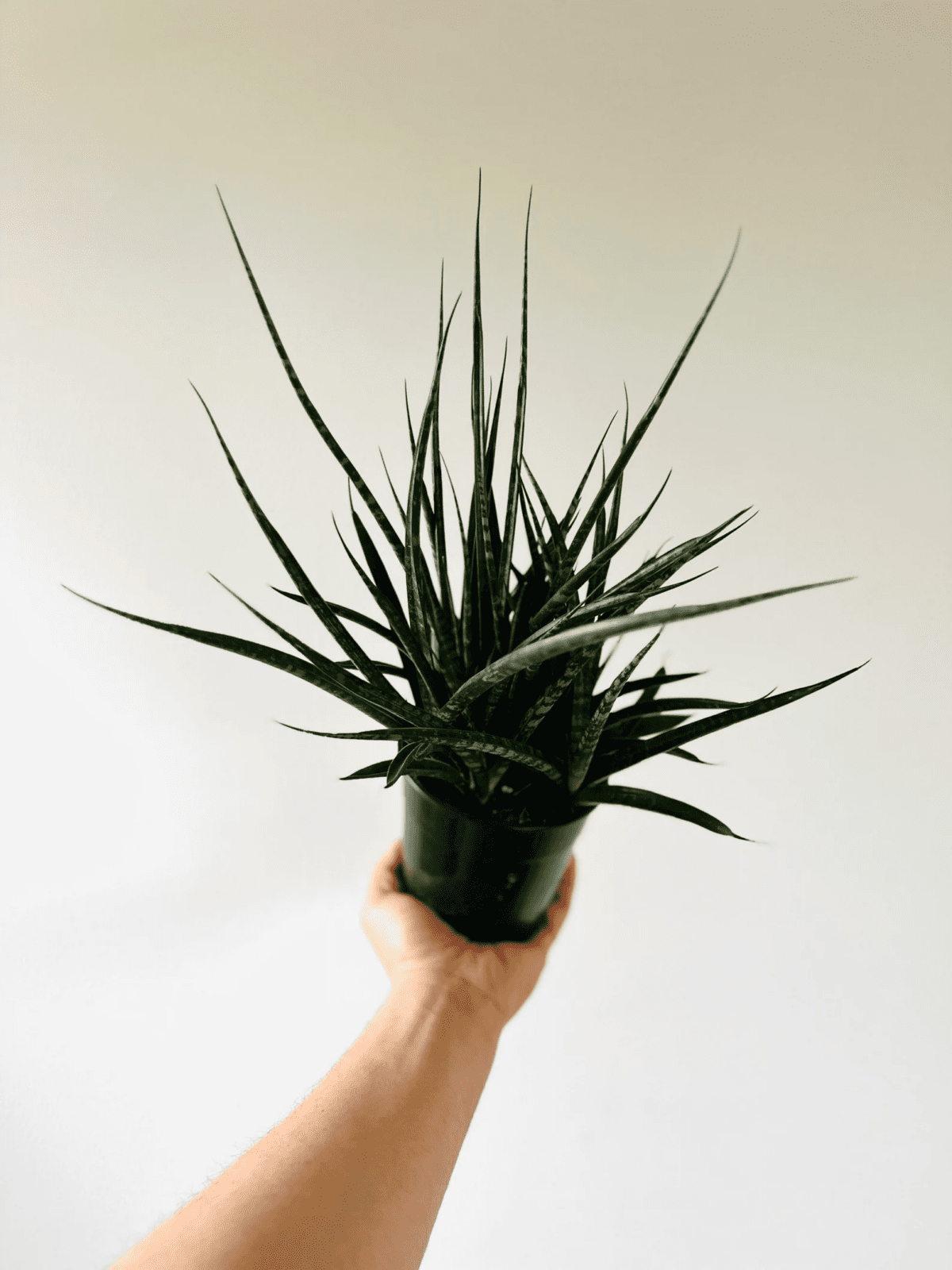
Image via Brumley and Bloom
This one is drought tolerant and requires minimal amounts of water. It only requires watering once per week. It is a hardy evergreen succulent native to Southern Asia, Africa and Madagascar.
With its unique green cylindrical cone type foliage, it boasts a tiger-shaped pattern with colors ranging from light to dark green, as well as yellow and sometimes white.
16. Sansevieria Kirkii “Star Sansevieria”
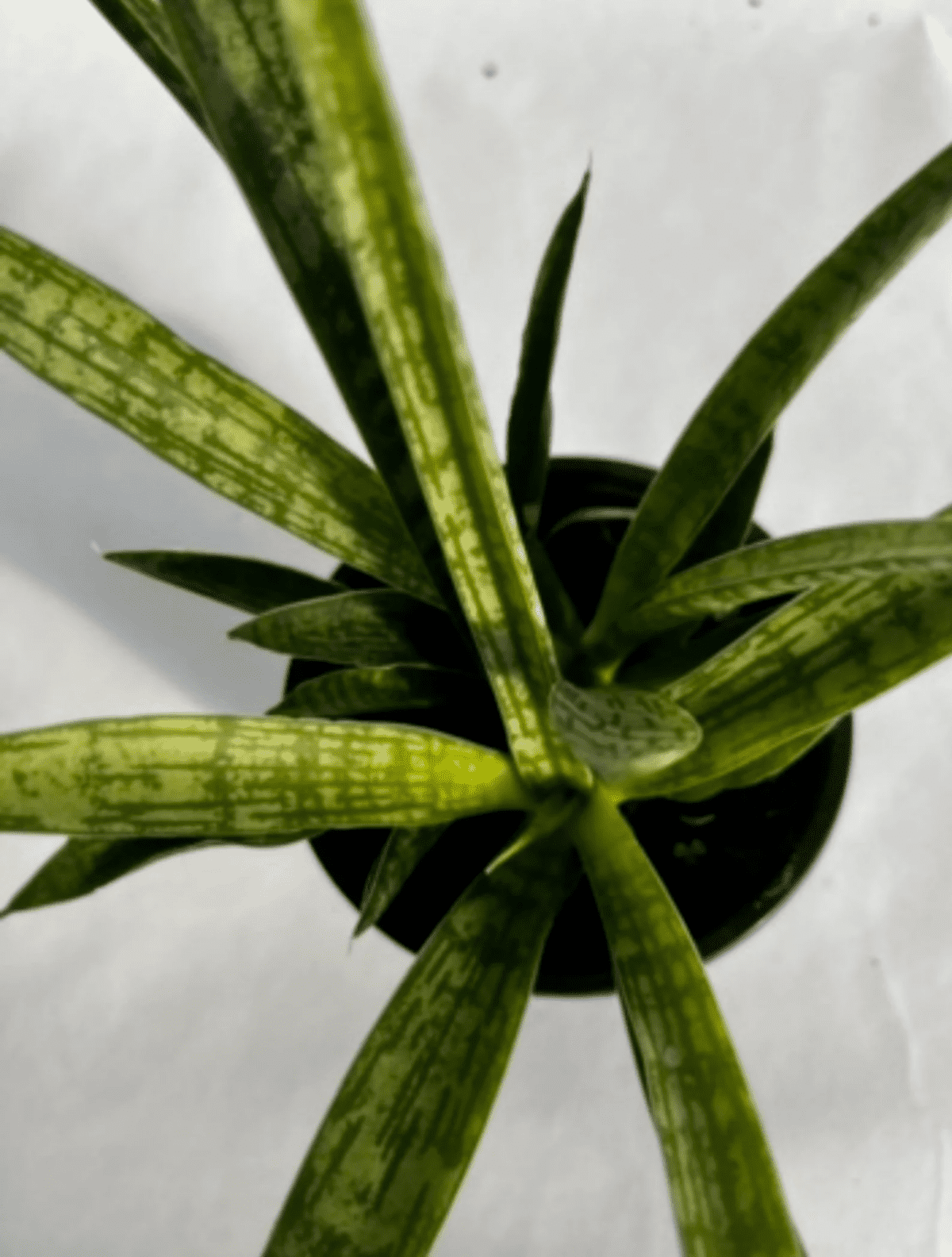
Image via Belle Decor Plants
The Sansevieria Kirkii is a hard to find kind of Sansevieria plant. It is known to be a slow growing variety of Sansevieria. It is a native of the East African region, especially Tanzania.
It has upright leaves that are sturdy and lance-shaped and have wavy edges with an undulating brown and yellow margin and a pointy tip. It will grow best in a temperature range between 59 and 73 degrees F.
17. Sansevieria Patens
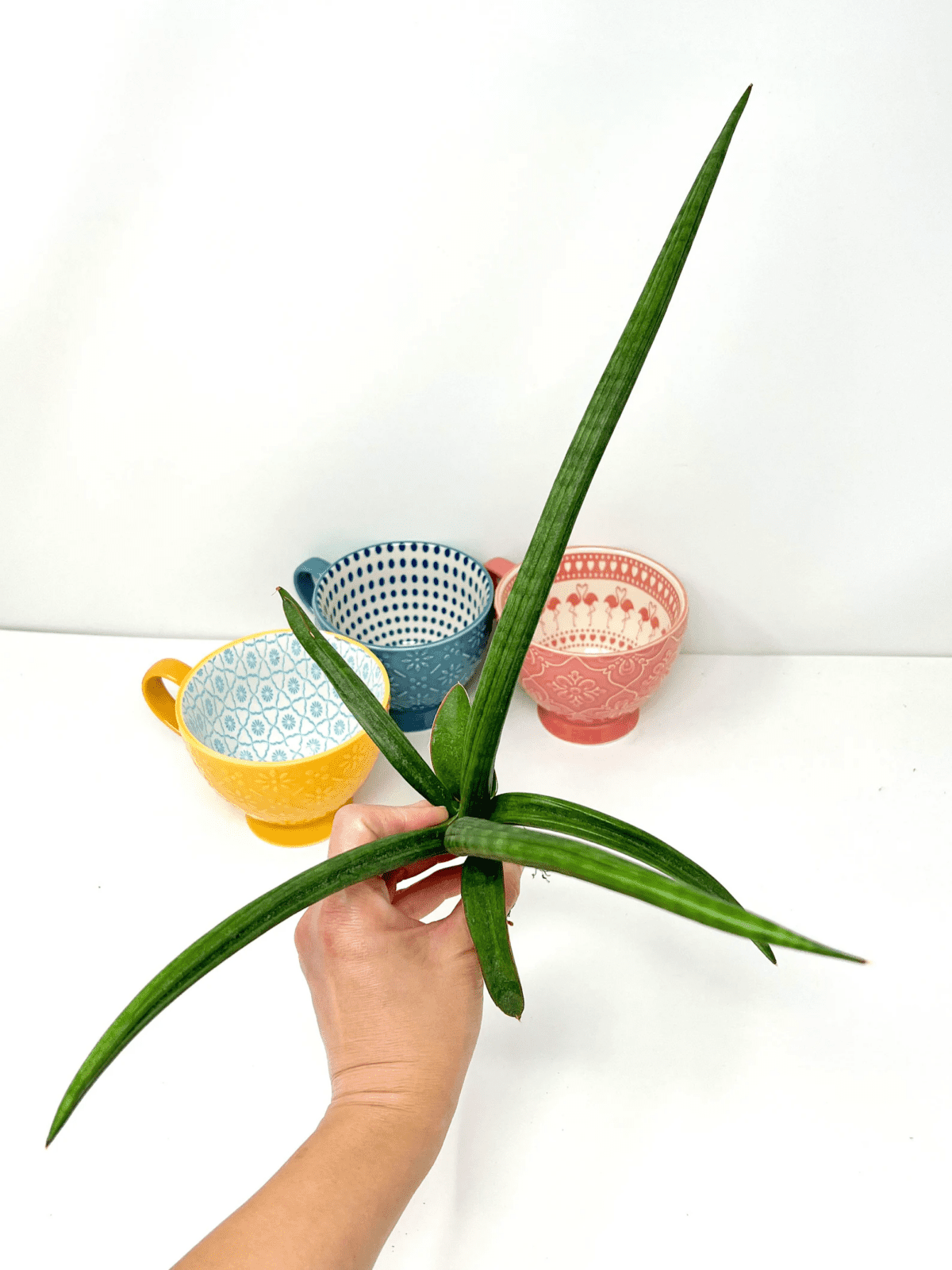
Image via Succulent Cabin
The Sansevieria Patens grows best in moderately bright or filtered light conditions. A spot in front of a north facing window works well for this. You should allow the soil to dry out completely between waterings.
This plant stores water in its leaves because it is a succulent plant. It is susceptible to root rot if left sitting in wet soil for an extended length of time. The leaves form large rosettes composed of short, arching cylindrical grooved leaves that spread in various directions
18. Sansevieria Cleopatra
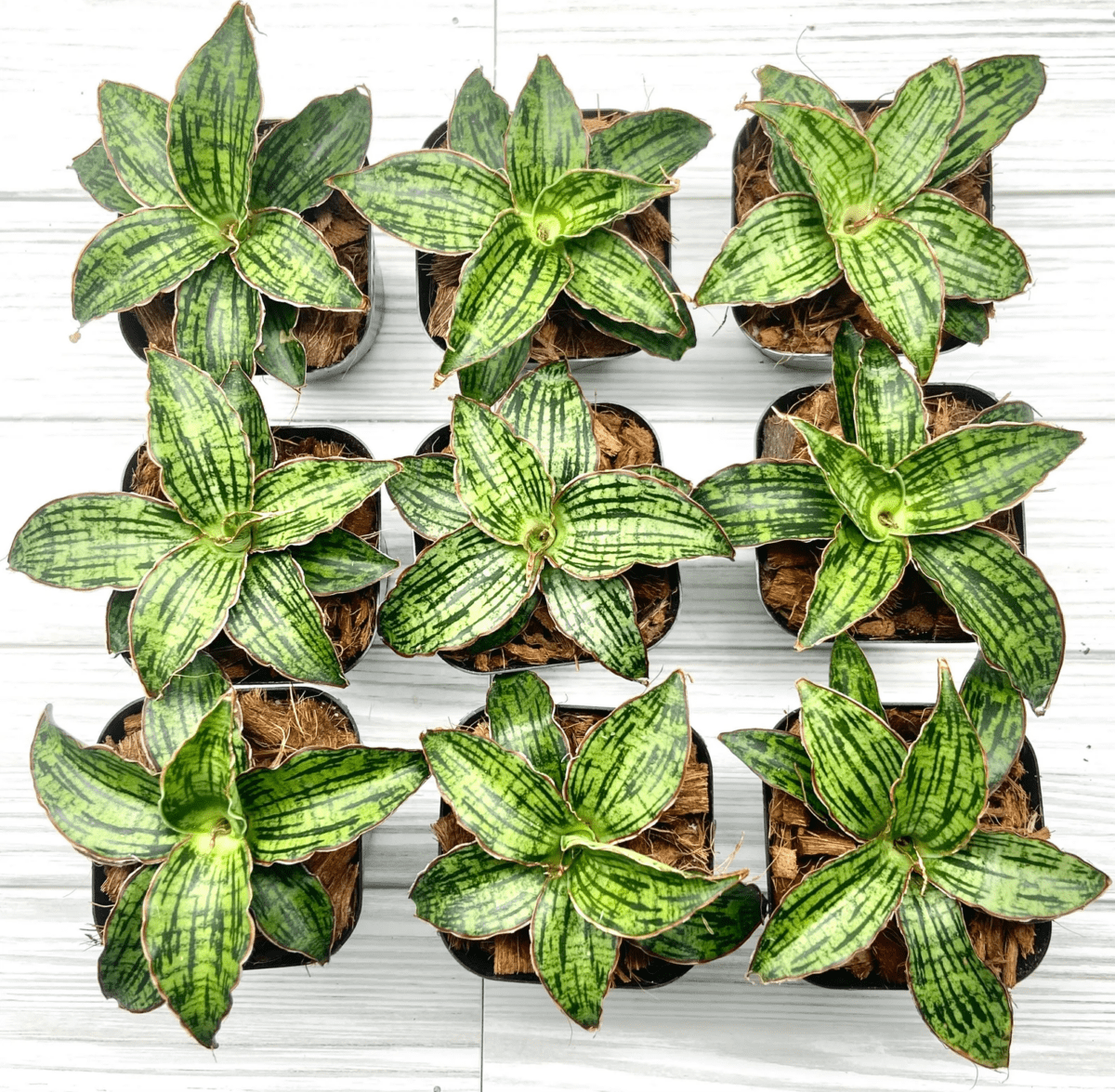
Image via Luv Strings Garden
This is a new hybrid Sansevieria which makes it a rare and hard to find plant. It is a slow growing variety of the Sansevieria plant. It can tolerate low light conditions, so is good for a low light place in your home.
This plant will also do well in low humidity. You should allow the soil to dry out completely between waterings and be sure to not let it sit in moisture at any time. It has beautiful striped leaves and a unique growing pattern.
19. Sansevieria Parva “Kenya Hyacinth”
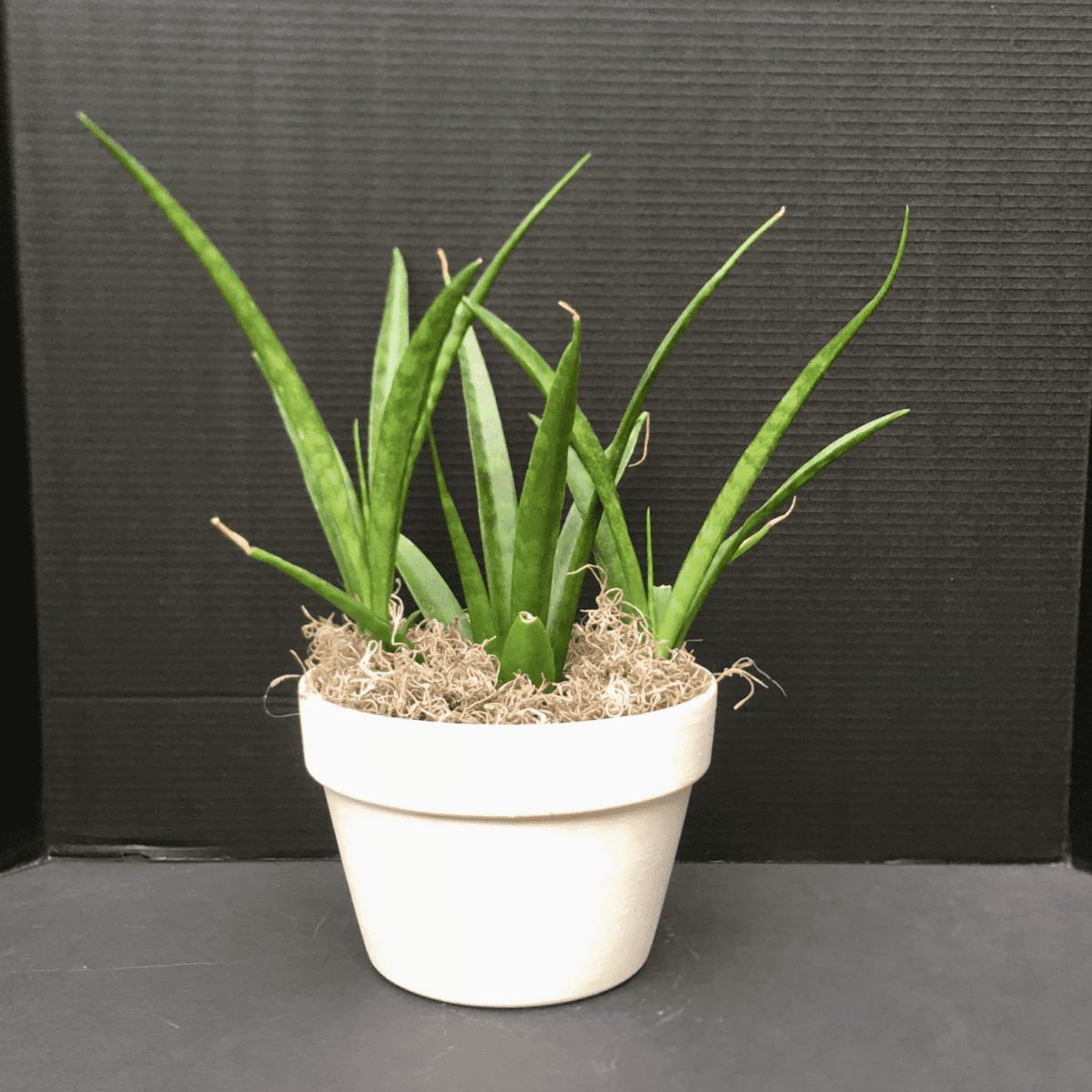
Image via What the Gardens
The Sansevieria Parva is often confused with the Sansevieria Dooneri plant. When it blooms, it has small pale pink blooms that resemble a hyacinth flower.
This is potentially one of the hardiest of the Sansevieria varieties! It grows well in bright indirect sunlight conditions. It should be watered deeply, but infrequently. You should keep it at temperatures above 50 degrees F to avoid any problems.
20. Sansevieria Trifasciata “Laurentii”
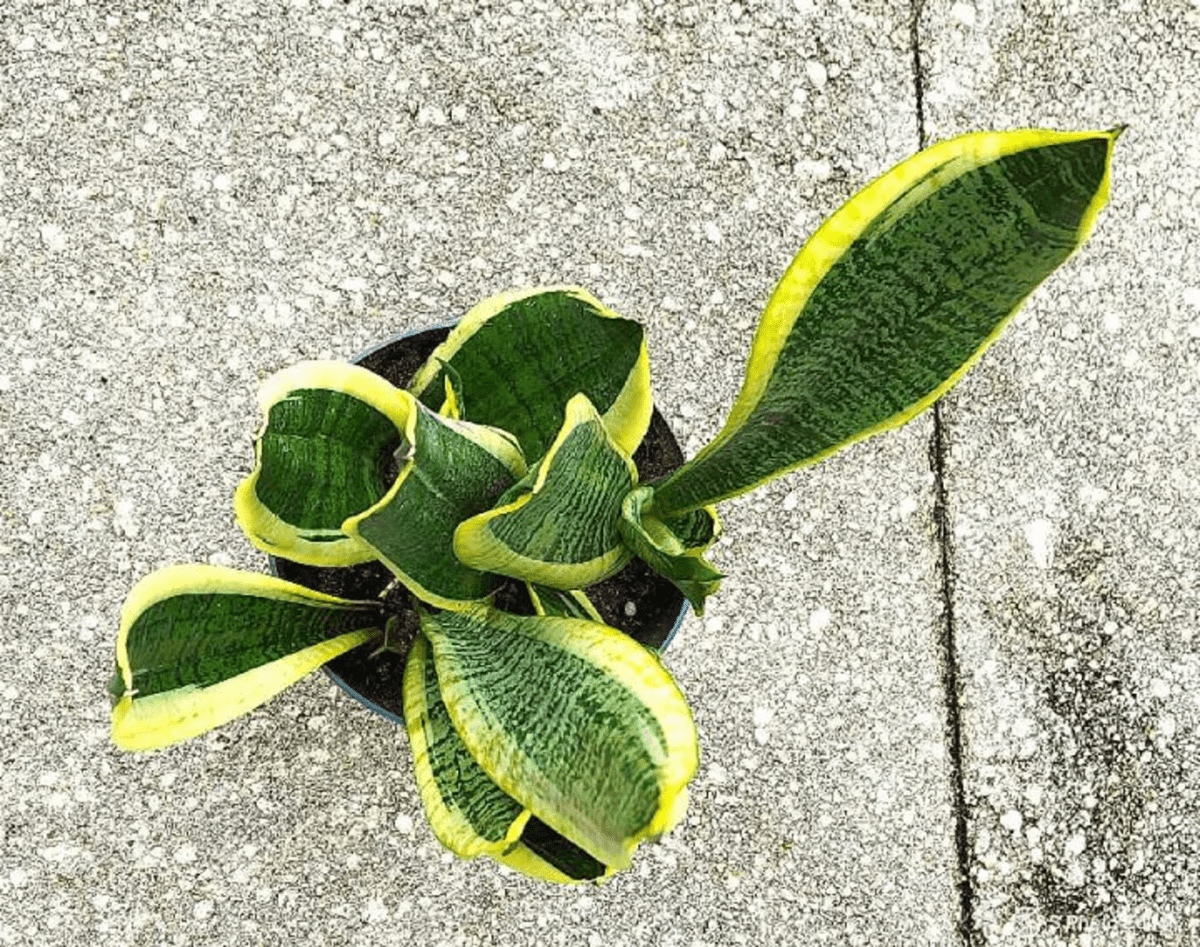
Image via River Leaf Foliage
The Sansevieria Laurentii thrives in medium to bright light, but can also tolerate low indirect light. It has long thick leaves that can grow quite tall over time. It has beautiful mottled and stripped green leaf centers with bright yellow edges.
Even though it thrives in low light, brighter light brings out more colors in the leaves. It should be watered every 2-3 weeks and you should allow the soil to dry out between waterings.
21. Sansevieria ballyi
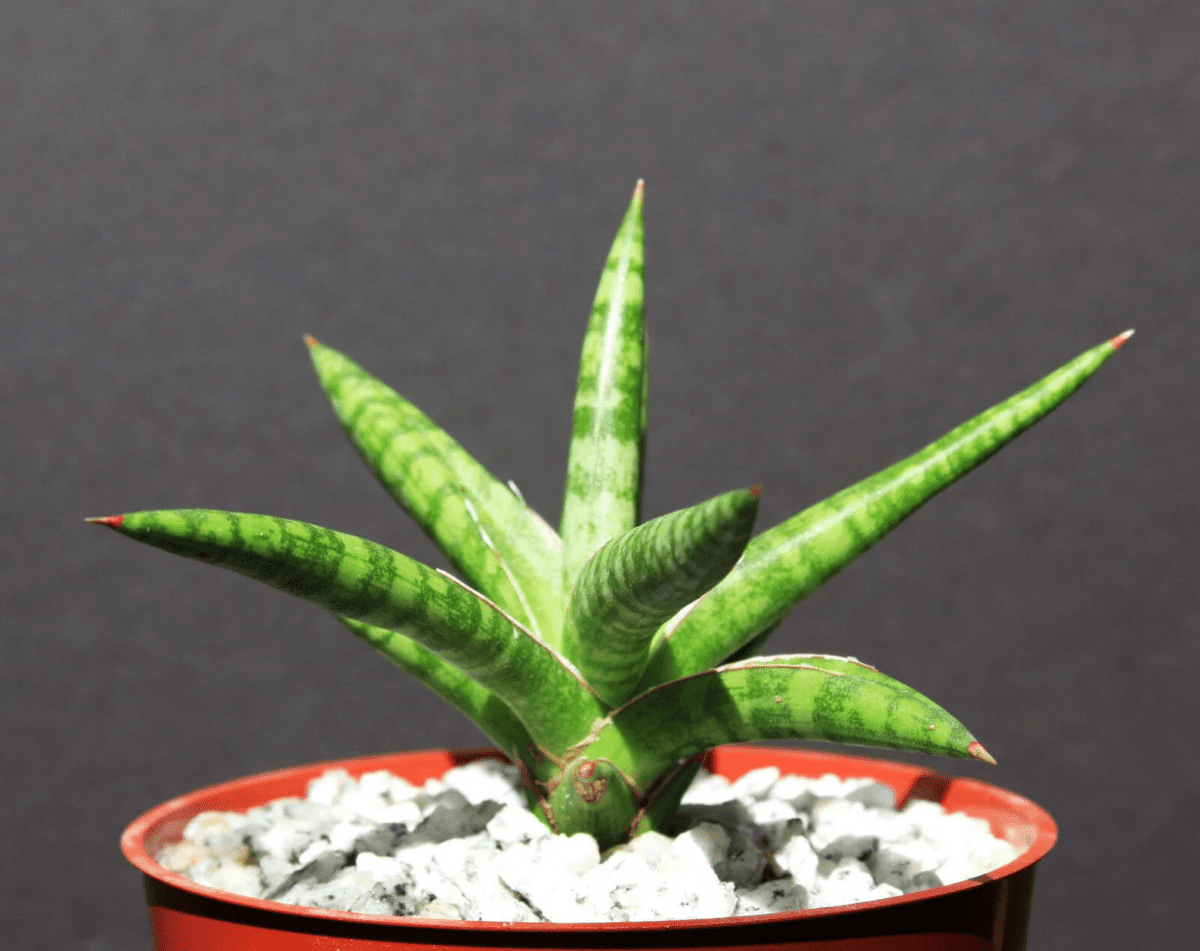
Image via Exotic Cactus Collect
This unique looking dwarf sansevieria plant has long, cylindrical leaves that are a yellow green. They can produce pale greenish white flowers when given optimal conditions.
Their leaves can get to be about 2-4″ long and 1/4″ thick. This plant is named after Dr. Peter R. O. Bally who discovered it in Nairobi, Kenya.
These are just a few of the many varieties of Sansevieria plants, but this gives you a good idea of what’s out there. If you choose to get some of these for your own collection, there is a great variety of shapes, sizes and colors to choose from.
There are so many options when choosing plants! If only you could own all of them, right?? I guess you would need a larger house or your very own greenhouse! Well, in the meantime, just keep on growing!
Want to know how to propagate snake plants? Head here!

I believe I have a “Twisted Sister” except the plant has 2 leaves am over 2 ft tall. I bought it last summer and left it outside in dappled shade. The leaves were much shorter with no twisting. It was sold as S Laurentii and bloomed in the summer. This was a treat as I didn’t know they bloomed.